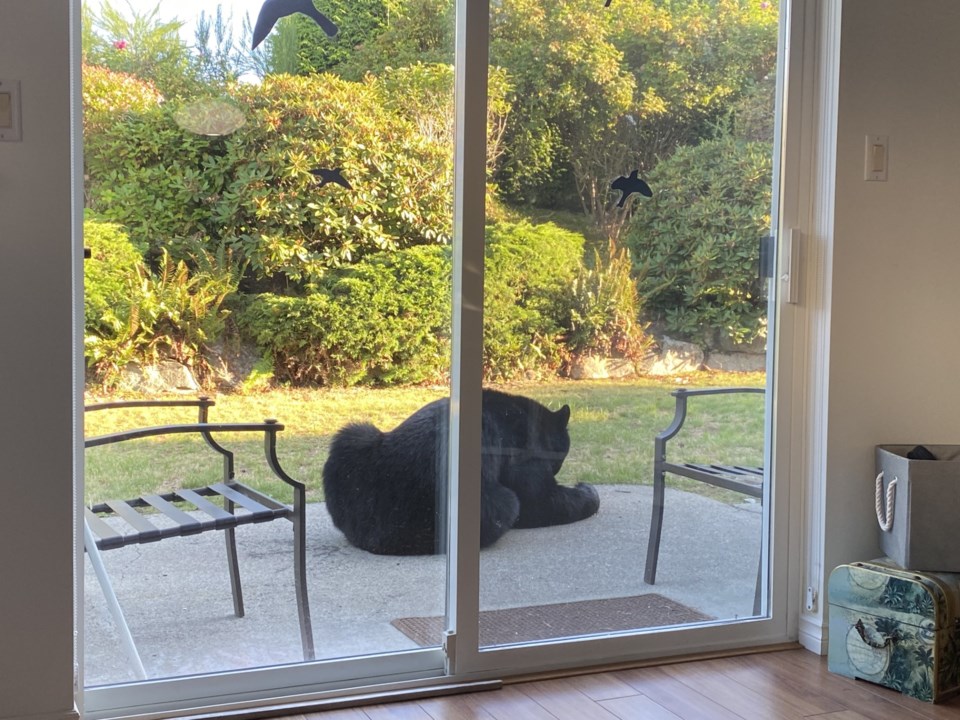Just like city planners are guided by fish habitat and riparian regulations when considering new developments, the same consideration should be made for bears, says a founder of Sunshine Coast Bear Alliance.
“The goal is to encourage more compassionate planning in looking ahead for urban areas and encroaching on the habitat, taking into account bears and their needs and other wildlife,” said Diane Henley. “Because bears are a keystone species for the environment. So, if they're doing well, then the other wildlife and the ecosystem are doing well."
To that end, the alliance retained the help of Bailey Environmental Consulting Inc. to develop tools and resources to support the management of American black bears and their habitat on the Sunshine Coast.
Bear conservation
The 88-page Corridor for Coexistence report identifies and prioritizes current threats to black bears, and creates habitat management guidelines related to urban development and bear conservation for the District of Sechelt, Sunshine Coast Regional District, Town of Gibsons, and shíshálh Nation. Henley said the report was years in the making, but just recently completed.
The project offers practical tools, including the "Develop with Care" guidelines, habitat mapping and local policy recommendations to help support development that considers the needs of black bears and other wildlife. The report also developed a conflict-management protocol that aligns with both the provincial Bear Aware program and local community planning.
Urban planning
Urban development in regions inhabited by black bears poses challenges that require integrated management guidelines to balance human safety, habitat protection, and black bear conservation, said the report. Current research indicates that as housing densities increase — for instance, areas exceeding 50 houses within two kilometres squared — bears are more likely to avoid these areas.
This highlights the need for urban planning to incorporate buffer zones that maintain contiguous natural habitats, including connectivity, in order to limit encroachment into critical bear resources and reduce the potential for conflict.
Henley said with an increasing number of bear-human encounters in urban areas, it’s crucial a management plan with a focus on coexistence and stewardship be created. According to the report, reacting after habitat is lost is no longer sustainable because critical areas take too long to regenerate on their own. Other threats to bears on the Coast include the human use of trails through black bear territory, climate change, road mortality, hunting and unregulated harvesting, and industrial and residential development.
Action now
Henley notes despite the fact the report focuses on black bears, recent grizzly sightings on the Coast add to the urgency of the need for a plan.
Garbage and attractants are an issue for grizzlies as they are for black bears, said Henley, noting the need to keep them away from chickens and other livestock. “I do personally find it frustrating to be honest, I’m not saying this very diplomatically, but when people have small livestock and other livestock and they don't have it secured, they don't have it behind an electric fence. Bears are opportunistic consumers, so they're going to go after the chickens and the hens and whatever's available, whether it be goats or sheep," she said.
Henley believes that to deal with that issue, local bylaws need to be stricter. She noted the rules around farming haven’t been reevaluated for years, so it’s still legal to shoot a bear that’s harassing livestock. She added, BC’s Wildlife Act is currently undergoing a review, which may influence how wildlife interacts with agricultural lands — “potentially leading to updates in regulations or coordination between wildlife protection and farm protection.”
“Fortunately, these challenges become more manageable through thoughtful, forward-looking planning,” said Henley.



